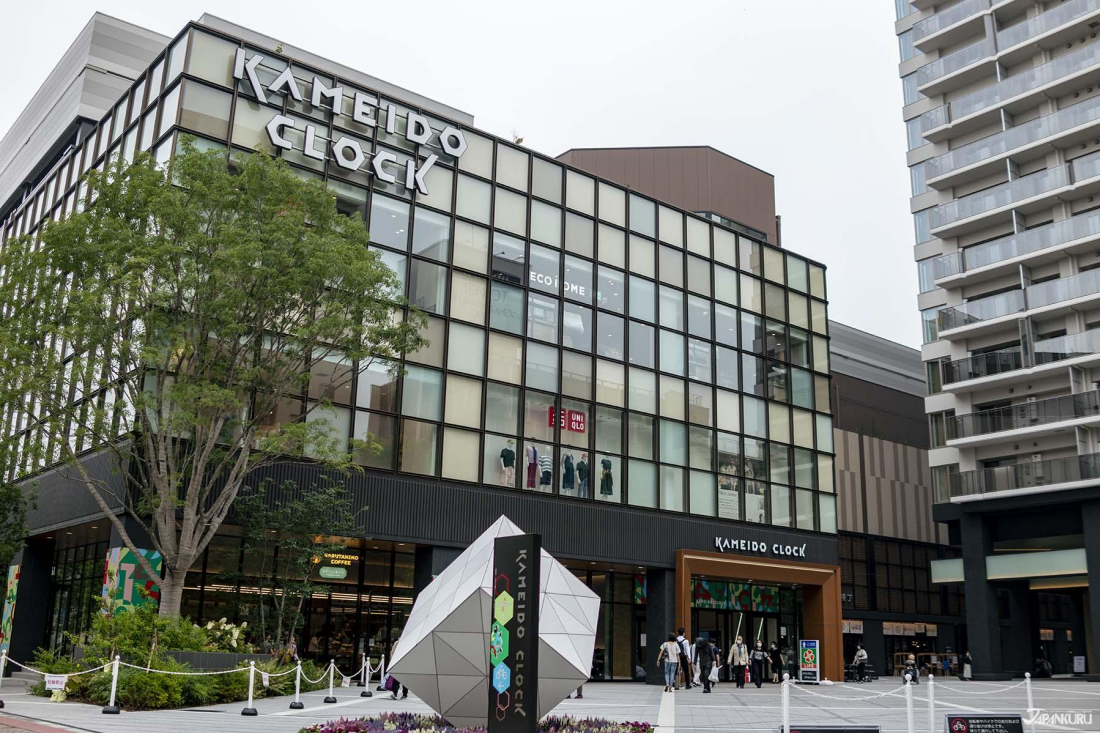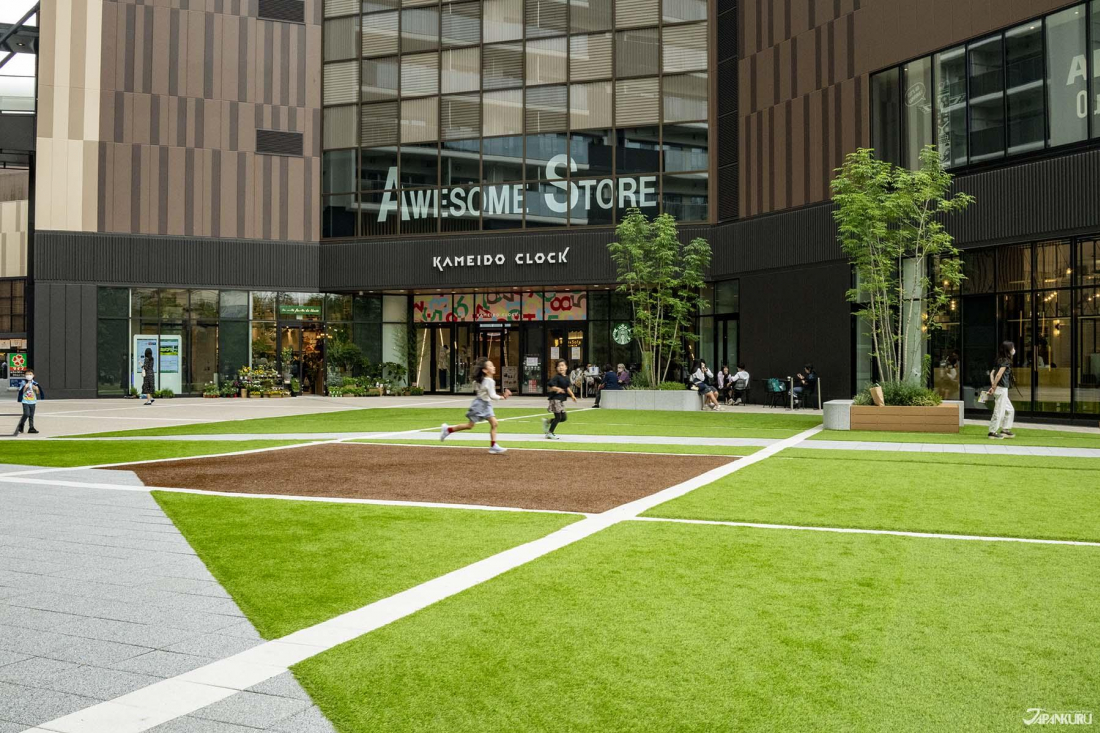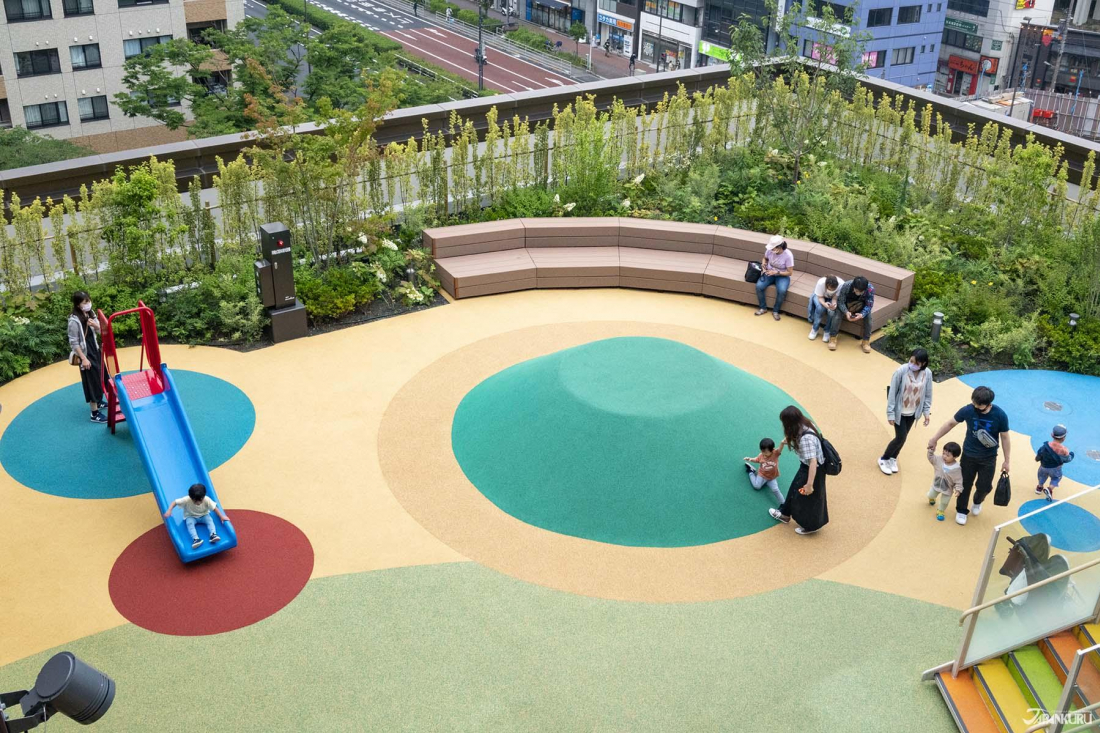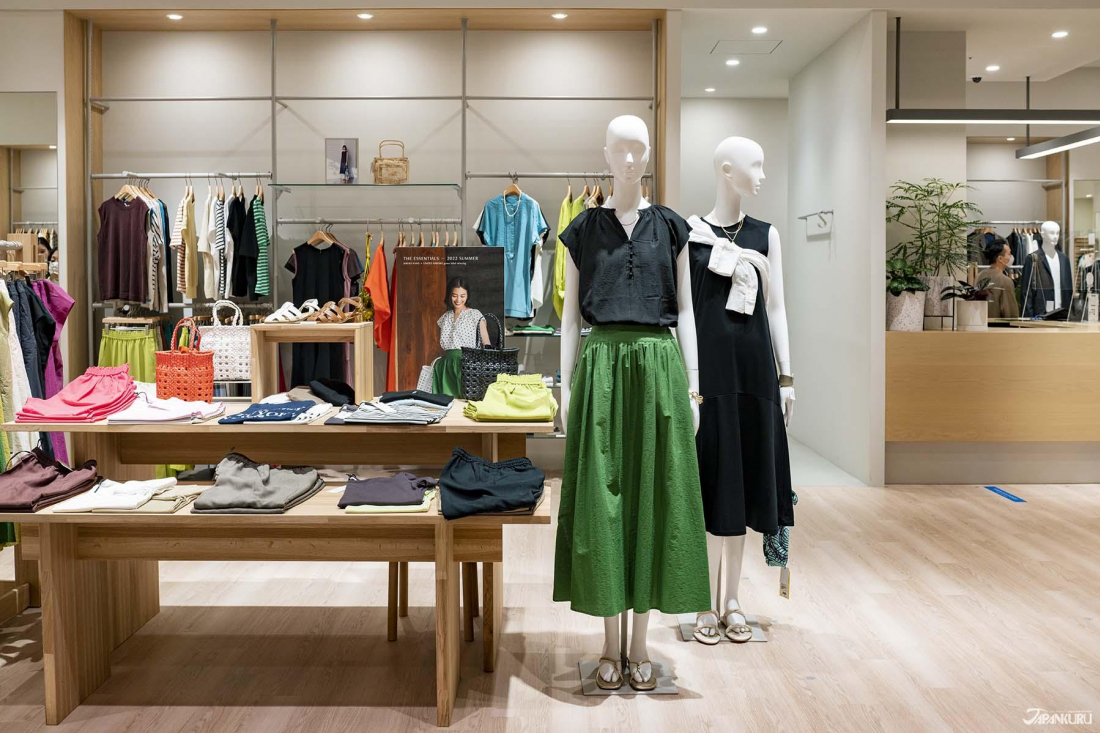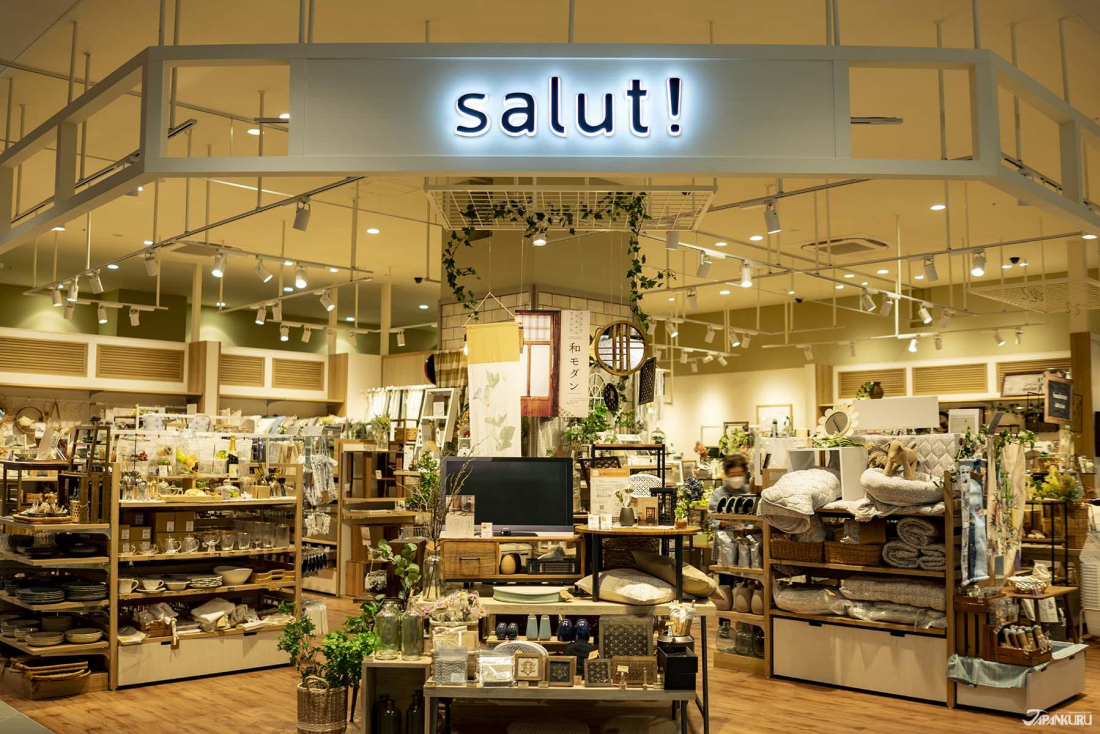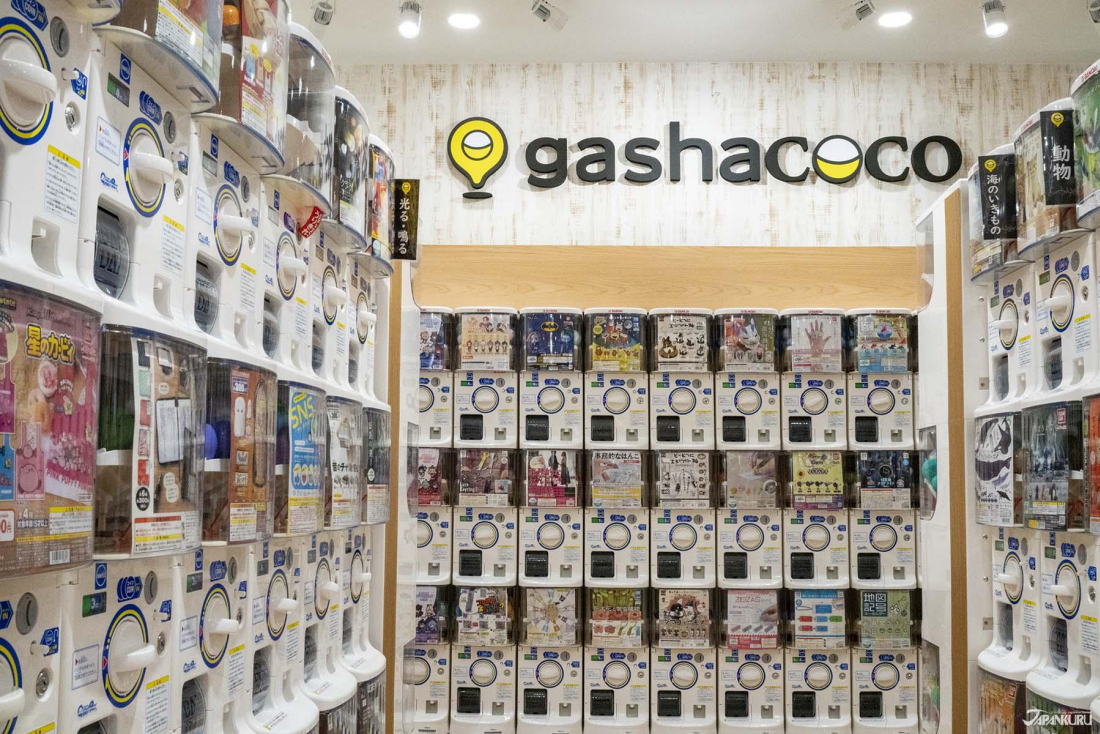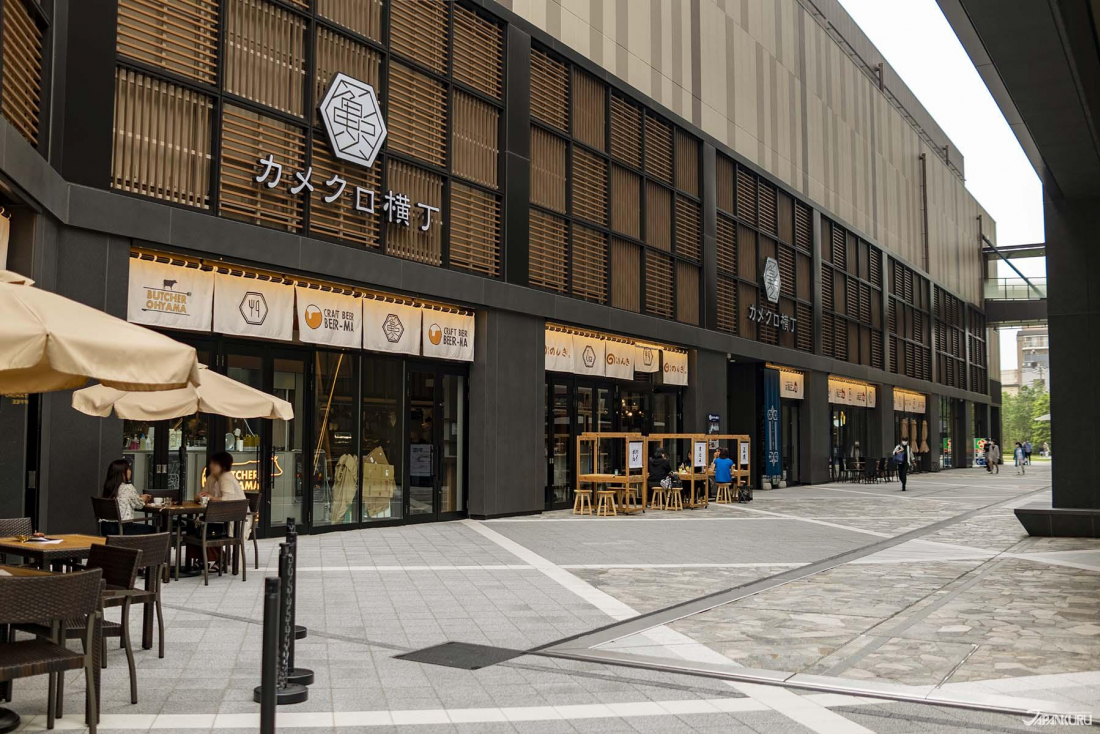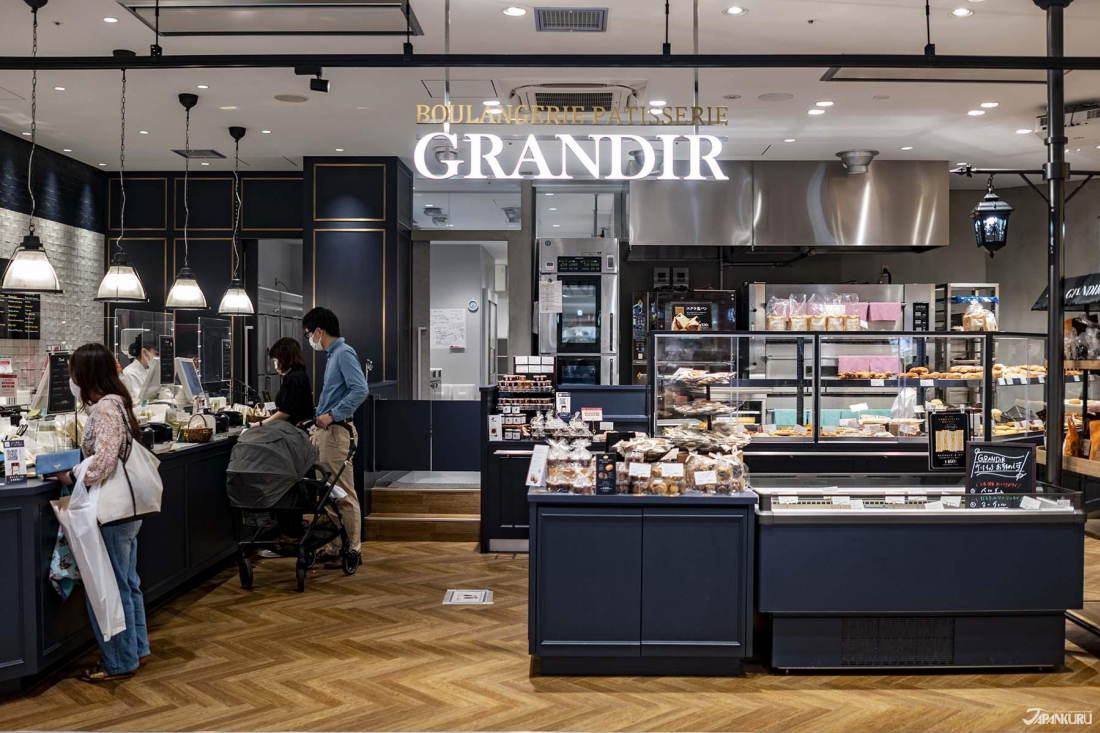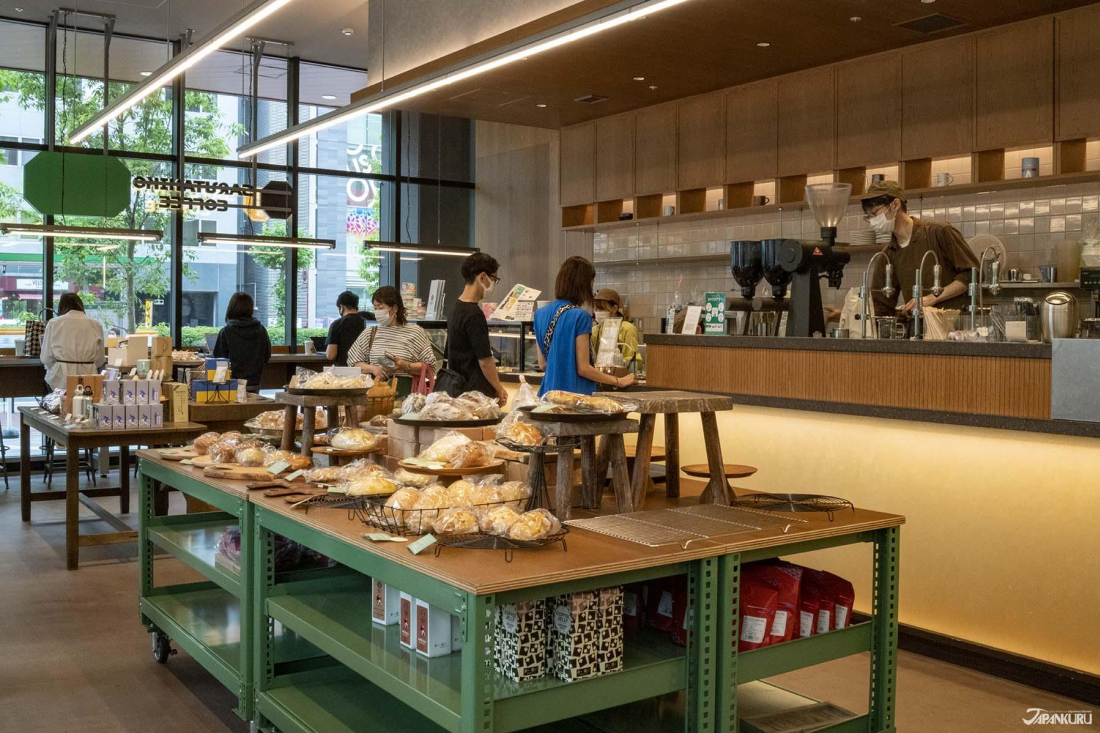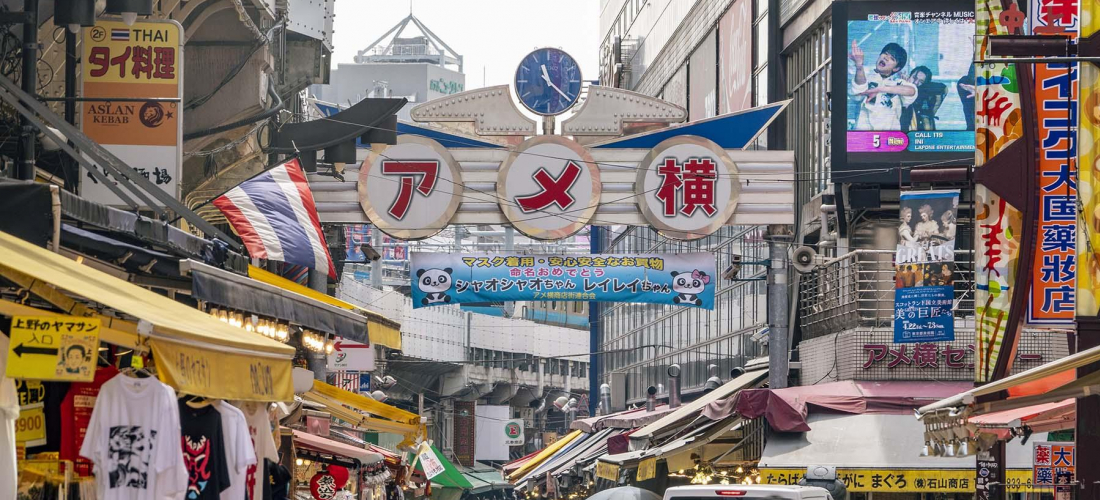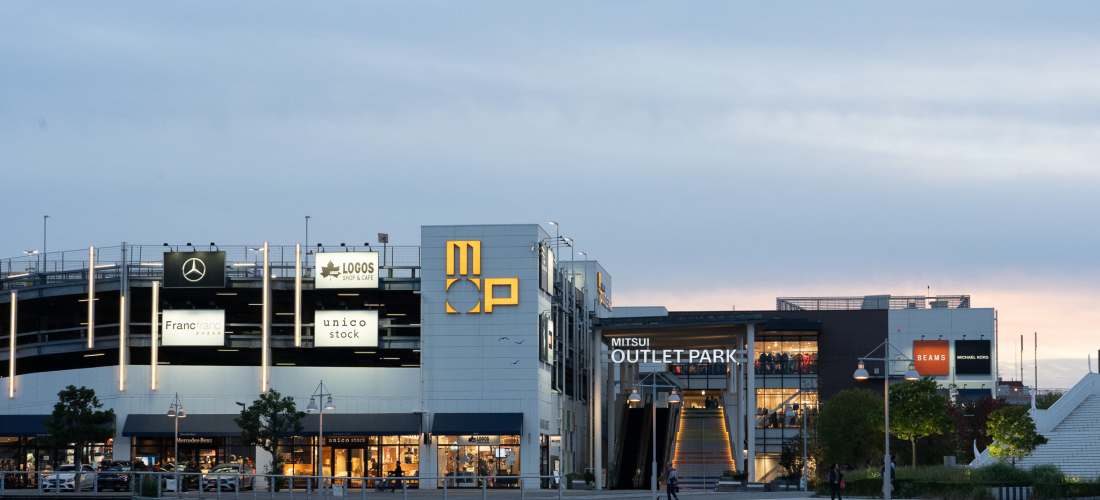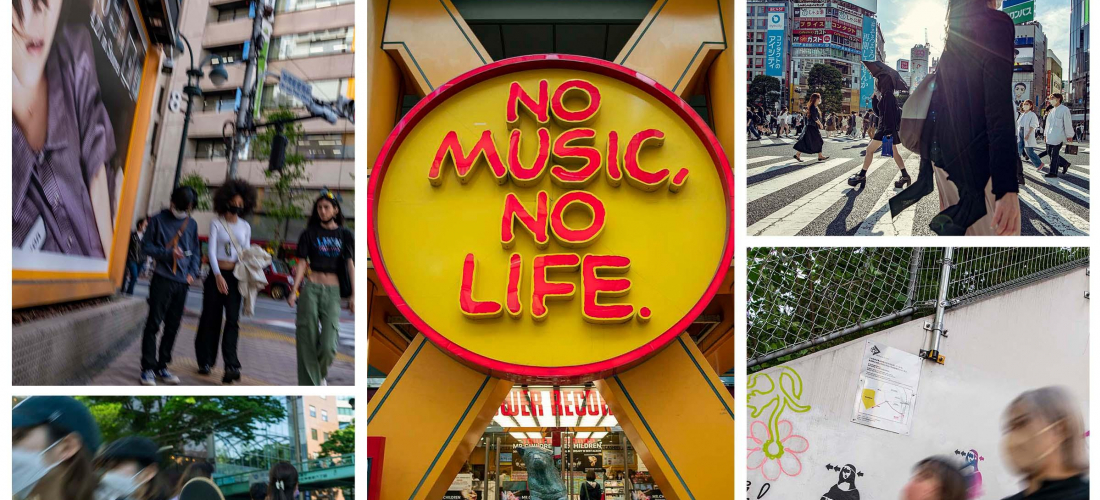CONTENTS
Kameido Clock has spacious outdoor places to relax, tempting dining options, plenty of Japanese brands selling fashion and other fun finds, and even an e-sports room!
Kameido Clock: An East Tokyo Hangout Spot
Kameido Clock is Tokyo's newest shopping mall, but have you been to Kameido yet? Aside from those living nearby, many travelers and locals in Tokyo will only visit this eastern area of the city to see the amazing wisterias of Kameido Tenjin Shrine that bloom in mid-spring each year. But Kameido is actually an interesting mix of residential areas, offices, and plenty of shopping and dining to cater to the locals, and Kameido Clock is the biggest, newest mall around, clearly looking to bring more people to the area with the convenient location almost across the street from Kameido train station. With plenty of new shopping, from Japanese fashion to practical home goods and some pretty unique novelties, plus plenty of trendy new places to eat and relax, it's likely to become a favorite hangout for families and any shoppers looking for a more laid-back destination.
Kameido Clock (カメイドクロック)
6-31-6 Kameido, Koto City, Tokyo
Hours: 10:00 – 21:00 (restaurant hours vary)
Official Website (jp)
Outdoor Areas & Entertainment
One of the most obvious features of Kameido Clock is the huge amount of space dedicated to outdoor relaxation areas. The paved square out front is surrounded by seating for people to perch on and drink their coffee, the first-floor eateries each offer their own outdoor tables, and the southern side of the mall looks out on an enormous park, with green spaces filled with playing children, park benches, and even a little garden full of seasonal flowers. If you want to go shopping, but you're spending time with someone who would prefer a picnic, this mall might work for both of you.
Families with young children will also appreciate the little play area off the mall's 4th floor food court, with a small slide and some bouncy astroturf underfoot. For kids bursting with energy after lunch, this is the perfect place to run around for a few minutes before getting back to shopping.
Kameido Clock also has a few areas dedicated to projects you wouldn't usually find in a mall, creating space for some unique facilities, ready to host some interesting events. Kame-Rabo (Kame Lab) is a community space perfect for hosting workshops, and events hosted by shops or members of the community, but Kame-Tere (Kame TV) is a video recording studio where the mall is set up to start a new YouTube channel focused on mall updates and also Kameido news in general. The mall is even home of Kame-Supo (Kame Sports), a specialized e-sports facility that will be the new home of Kameido e-sports team the Kameido Turtles. There's a window looking into the e-sports room, so shoppers can peek in when they're practicing!
Shopping
Kameido Clock has 4 floors packed with all kinds of shopping, and since the facility seems to be aiming for "fun for the whole family," there's a good variety of clothing, home goods, books, toys, and plenty of novelty goods. The fashion options in particular clearly cater to wide age ranges and all kinds of styles. Shop for frilly little kids' dresses at Petit Main, or fit in with the young and fashion-conscious with crop tops and skater styles from Wego. Anyone looking to emulate the simple, sophisticated looks that seem to be a signature of Japanese fashion brands, however, should definitely take a look around shops like United Arrows Green Label Relaxing, Coen, Ciaopanic Typy, and Usagi Online.
Of course the mall has more than just apparel! There are a number of shops selling kitchen wares and home goods, like the particularly quaint boutique Salut!, and a large chunk of the mall's fourth floor is taken up by a Tsutaya Bookstore. Tsutaya has plenty of reading materials for sale, but it actually has some other areas dedicated to interesting products like gourmet groceries, too. Back on the second floor, Ainz & Tulpe has shelves upon shelves of colorful cosmetics, from glittering makeup palettes to the latest new skincare trends. Quite a few of the shops in Kameido Clock fall under the category that Japan calls "zakka" (雑貨), which is usually translated as variety goods, or called a gift shop. These little shops sell all kinds of fun items, and are often a good way to see styles and trends that are making their way around Japan!
If you're getting tired of carrying around a coin purse filled with jingle-jangling 100 yen coins, then this gashapon-only shop is probably the easiest way to get rid of some change and get yourself some very fun little keychains and figures in return.
Eating
Again catering to a broad audience, Kameido Clock has quite a few places to grab a bite to eat, and each area has a different atmosphere along with the different food selections. Before you even go inside, no matter which entrance you're aiming for, you'll catch a glimpse of the Kame-Kuro Yokocho area running along the side of the building. This handful of casual sit-down restaurants includes options like pasta, tempura, and seafood bowls, among other options, and seating spills out into the open air of the "alley" that runs between the mall and the residential building next door. The buildings provide enough shade that these outside tables are likely to be a popular choice all summer long!
Head inside and up to the fourth floor, and the Food Park is a colorful, brightly lit food court with plenty of seating and a number of different fast food dining options. Anyone looking for Japanese food will be satisfied with choices that include ramen and udon noodles, or Japanese curry. Little kids, before they run off to the tiny playground, might be more excited about the hamburgers and fried chicken!
Like many large shopping facilities in Japan, the basement of Kameido Clock is also dedicated to food, although most of it is dedicated to more or less gourmet groceries. If you're not looking to bring home raw fish or fresh vegetables to cook with, there's a small seating area on one side of the floor, and some ready-made food counters selling Korean-style soups, Japanese-style fried foods, and a variety of baked goods. Grandir, a French bakery hailing from Kyoto, is always popular for their caneles, curry bread, and bagels!
If you're just looking for a coffee break and a light snack, there are a few cafes around the mall, but Sarutahiko Coffee is the most stylish – with all kinds of seating, and tables on the edge of Kame-Kuro Plaza out front. This local Tokyo coffee chain is slowly expanding, after opening its first shop in 2011 over in the stylish neighborhood of Ebisu. Now it's bringing the same chic coffee shop vibes to Kameido, serving up simple drip coffee and lattes with a variety of tasty baked goods. At the end of a busy afternoon full of shopping, there's nothing better than sitting with a cup of coffee and people-watching, as other shoppers cross the street and spread around the mall like waves breaking against the shore.
A New Kameido Go-To
While Kameido certainly hasn't been much of a sightseeing destination for most of the travelers who have come to see Tokyo in the past, the neighborhood is increasingly an appealing place to live and to explore. So next time you're looking for a place to get some shopping done, or a place to wander through grassy parks and enjoy fresh food, sweets, and coffee, this new shopping facility in eastern Tokyo is a must see. Stop by Kameido and take a look around Kameido Clock!
Details
NAME:Kameido Clock (カメイドクロック)
ACCESS:Kameido Station
PROFILE
Looking for the latest trends and products coming out of Japan?We've got you covered! <a href="https://www.worldshopping.global/target=_blank">Homepage</a> | <a href="https://www.facebook.com/worldshoppingjp/target=_blank">Facebook</a> | <a href="https://twitter.com/worldshoppingjptarget=_blank">Twitter</a> | <a href="https://www.instagram.com/worldshoppingjp/target=_blank">Instagram</a>
COMMENT
FEATURED MEDIA
VIEW MORE
Narita Airport Tax-Free Shopping List 나리타공항 면세점 쇼핑 리스트 #pr #calbee #jagapokkuru #japanesesnacks #japanesefood #japanesesouvenir #japantravel #japantrip #naritaairport #hokkaido #나리타국제공항 #나리타공항면세점 #나리타공항면세점과자 #일본공항면세점 #일본기념품쇼핑리스트추천 #공항면세점쇼핑리스트 #일본과자추천 #면세점일본과자 #일본기념품추천 #일본과자 #자가폿쿠루 #일본간식 #일본과자쇼핑 #일본면세점필수템 #일본기념품쇼핑

Asakusa's Sanja Matsuri, one of the biggest festivals in all of Tokyo, is almost here! Make sure you check out the festival route so you don't miss all the festivities this May. #asakusa #sanjafestival #sanjamatsuri #asakusashrine #sensoji #sensojitemple #japanesefestival #shintoshrine #japaneseculture #tokyo #tokyotrip #tokyotravel #asakusasightseeing #matsuri #japantrip #japantravel #springinjapan #tokyotravel #japankuru #산자마츠리 #아사쿠사 #일본마츠리 #일본여행 #일본5월

Odaiba's DiverCity Tokyo Plaza is home to the famous real-size 20m-tall Unicorn Gundam, and the popular shopping center has even more Gundam on the inside! Check out the Gundam Base Tokyo on the 7th floor for shelves upon shelves of Gunpla, and the Gundam Base Tokyo Annex on the 2nd floor for cool anime merchandise. Both shops have tons of limited-edition items! #pr #odaiba #tokyo #tokyotrip #japantrip #japantravel #PR #divercity #divercitytokyoplaza #tokyoshopping #gundam #unicorngundam #gundambasetokyo #anime #otaku #gunpla #japankuru #오다이바 #다이바시티도쿄 #오다이바건담 #건담 #일본건담 #건프라 #건담베이스도쿄

Evangelion, in miniature!? Tokyo's SMALL WORLDS Miniature Museum is actually a must-see for anime lovers, thanks to the tiny Evangelion Hangar and Tokyo-III... plus a whole universe of other scenes both real and fictional. #smallworlds #smallworldstokyo #tokyotrip #tokyotravel #evangelion #eva #anime #miniature #miniatures #animefigure #japantrip #japantravel #에반게리온 #스몰월드 #에반겔리온 #スモールワールズ #오다이바 #아리아케

Have you sat down for a snack at Sumida Aquarium yet? This aquarium next to Tokyo Skytree is known for its penguins and garden eels, but we can't get enough of their cute snacks! There are lots of good seats around the aquarium, too, so it almost feels like one big cafe. 🐧 • Find out more at Japankuru.com! (Link in bio.) • #japankuru #sumidaaquarium #skytree #tokyoskytree #solamachi #sumida #tokyo #tokyotrip #tokyotravel #aquarium #japanesesweets #themecafe #すみだ水族館 #Japan #日本 #일본 #Japon #ญี่ปุ่น #Japão #япония #japantravel #日本旅行 #日本旅遊 #japan_of_insta #japantrip #traveljapan #japan🇯🇵 #igerstokyo #explorejapan

For anime fans, the Evangelion areas at Small Worlds Miniature Museum are a must see! The tiny miniature people in the Evangelion Hangar look like ants beneath the moving Unit-01, Unit-00, and Unit-02! And over in Tokyo-III, characters like Shinji, Rei, and Katsuragi live life on a miniature scale. #odaiba #tokyo #tokyotrip #japantrip #japantravel #ariake #smallworlds #miniaturemuseum #smallworldstokyo #tokyotravel #evangelion #eva #anime #miniature #miniatures #animefigure #japankuru #스몰월드 #에반게리온 #오다이바 #오다이바관광 #오다이바스몰월드 #미니어쳐


